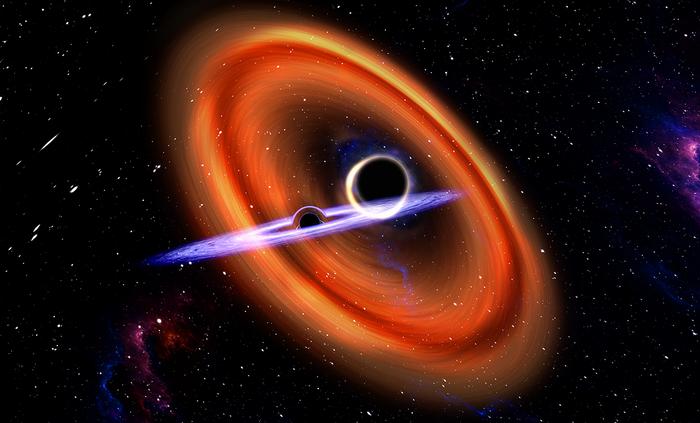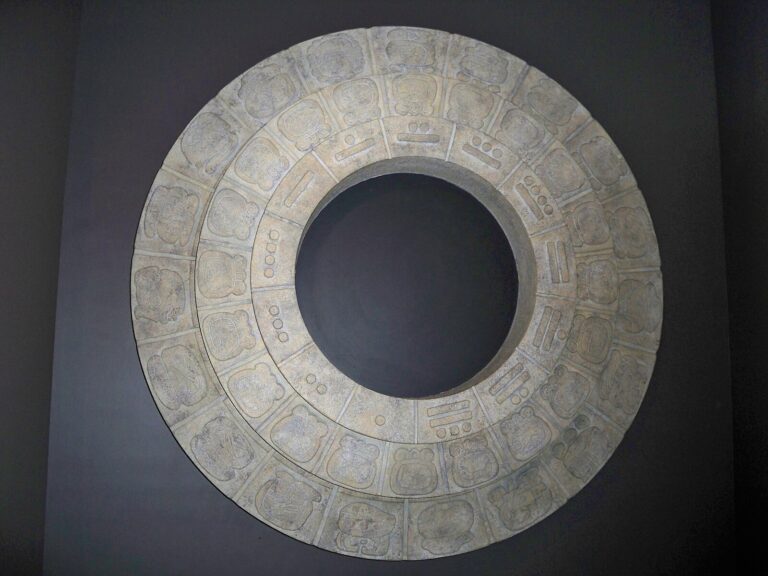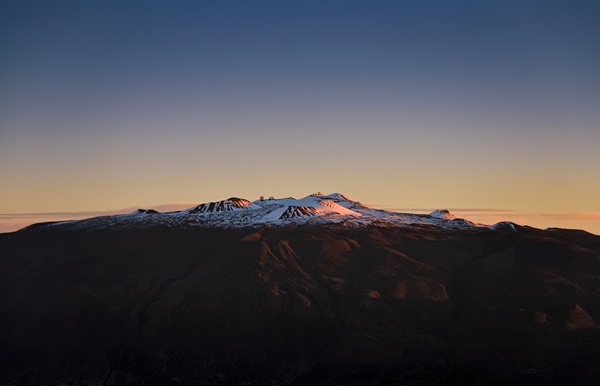
Key Takeaways:
- The Maunakea Stewardship Oversight Authority (MKSOA), established in 2022, is transitioning management of Mauna Kea from the University of Hawaii, commencing a five-year process concluding in 2028. This new authority includes representatives from both astronomical observatories and Native Hawaiian communities, granting Native Hawaiians a voting role.
- A potential compromise is emerging, involving the construction of the Thirty Meter Telescope (TMT) contingent upon the decommissioning of other telescopes on Mauna Kea, aiming to maintain or reduce the overall astronomical footprint on the mountain.
- The MKSOA faces challenges including potential skepticism from activists advocating for reduced or eliminated astronomical presence, and logistical hurdles in establishing its operations and securing allocated funding.
- Initial reactions from the astronomical community, including the National Science Foundation, express cautious optimism towards the MKSOA’s approach, indicating a willingness to collaborate and consider the board's decisions regarding TMT construction and telescope decommissioning.
After years of protests that halted the construction of the Thirty Meter Telescope (TMT) on Mauna Kea and divided communities in Hawaii, a major change in the management of the summit is underway.
Since the beginning of this year, a new state-appointed oversight board has been preparing to assume management of Mauna Kea. Under a law signed in June 2022 by then-Hawaii Governor David Ige, a five-year transition period formally begins in July of this year. Then, in 2028, the Maunakea Stewardship Oversight Authority (MKSOA) will take over stewardship of the mountaintop from the University of Hawaii (UH), which has managed the site since 1968.
Crucially, the MKSOA includes representatives from both astronomical observatories and Native Hawaiian communities. Its members say it marks a new approach, one that for the first time gives Native Hawaiians a voting role in overseeing the mountaintop. And although board members don’t want to get ahead of the process, an emerging compromise could see the embattled TMT built atop the peak in exchange for the decommissioning of several telescopes.
The broad outlines of such a deal would be similar to terms previously agreed on by the University of Hawaii with the state Board of Land and Natural Resources (BLNR) as conditions for obtaining the building permit for TMT’s construction, which never commenced in the face of protests.
What may be different this time is the process and the approach — what the board calls a model of mutual stewardship.
The MKSOA is “a new community-based management model that for the first time includes cultural practitioners, lineal descendants, and natural resource and education experts from throughout the community as mutual stewards of Mauna Kea,” said Kaʻiu Kimura, director of the ʻImiloa Astronomy Center at the University of Hawaii in Hilo, speaking Jan. 9 at a session of the 241st meeting of the American Astronomical Society (AAS) in Seattle, Washington.
The board still faces many challenges, and potential skepticism from activists who seek a smaller footprint or total removal of astronomical facilities from Mauna Kea. But its members say they have found the common ground that seemed unreachable in 2019, when protests and tensions flared.
“There really was what appeared to be a no-win situation back then, and no way of how this was going to be resolved between the community and government and astronomy field,” MKSOA board member and native rights activist Noe Noe Wong-Wilson told Astronomy at the AAS meeting. “It’s still early in the life of the new authority, but there’s actually a pathway forward.”
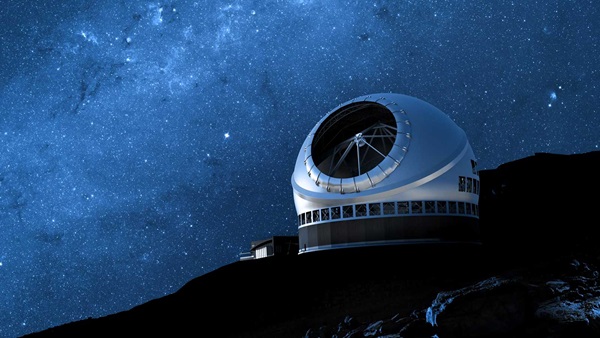
A contentious telescope
The Thirty Meter Telescope, backed by an international consortium of institutes and agencies, would be larger than any telescope now in existence — in an entirely different size class from the 13 other facilities already built on Mauna Kea. The dormant volcano’s peak is sacred to Native Hawaiians, home to their deities and ancestors. In ancient Hawaiian law, access to the summit was restricted to only the highest-ranking leaders.
In recent years, Mauna Kea has become a symbol of Native Hawaiians’ fight for self-determination. Activists argued that astronomers are continuing a colonial approach that denied Hawaiian people a voice in the use of their land, going back to the overthrow and annexation of the Hawaiian Kingdom by the U.S. in the late 19th and early 20th centuries.
For astronomers, Mauna Kea has always been attractive for its ideal observing conditions. At 13,800 feet (4,200 meters) high, the peak lies above much of the distorting effects of the atmosphere; it also has dry air and clear skies.
Astronomers’ push for the TMT has at times turned ugly. In 2015, University of California, Santa Cruz, astronomer Sandra Faber called protestors “a horde of native Hawaiians” in an email to colleagues. She issued an apology two days later. Hundreds of scientists signed a statement condemning the language, and after two weeks of public silence, the AAS followed suit.
Backers of the TMT also accused activists opposed to its construction of being anti-science. In a 2014 New York Times opinion piece, science writer George Johnson called the TMT protests “skirmishes against science.” He also compared activists to religious fundamentalists, writing that “[Native American] creationism is tolerated out of a sense of guilt over past wrongdoings.”
Wong-Wilson rejects that characterization.
“The conflict was never between our culture and western science,” said Wong-Wilson, who is executive director of the Lālākea Foundation, a group of cultural and spiritual practitioners. “We’re as fascinated with our view of the heavens, our view of constellations, and our relationship [with them] from the Native perspective as anything.” Rather, she said, the issue was “the use of particular areas of land, of which there may be conflicting interests.”
Those interests include the footprint not only of astronomy but also tourism and recreation, as well as preserving the ability for Native Hawaiians to carry out cultural practices on the mountain, including funeral rituals. “Our stand on Mauna Kea — to protect Mauna Kea — was about a particular placement of a particular telescope that was just one too many,” said Wong-Wilson.
When construction on the TMT began in 2015, activists set up camp on the road to the summit to block equipment and workers from reaching the site. The TMT eventually prevailed in a Hawaii Supreme Court case. When construction was set to recommence in 2019, thousands of people gathered to again occupy the road for months. Dozens were arrested or cited.
But when COVID-19 brought the world to a standstill in early 2020 and everyone left the mountain, a core group of astronomers and activists began a dialogue, out of the public eye, in an attempt to build trust with one another and resolve the impasse. These discussions planted the seeds for the MKSOA.
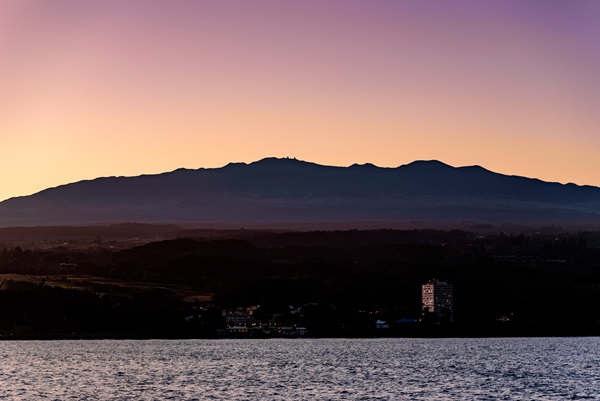
New management
In 2021, as the University of Hawaii board of regents considered the new Mauna Kea management plan, discussions in Hawaiian political circles began building over the possibility of a management structure that would remove UH altogether.
The university’s oversight of the mountaintop had previously been scrutinized — and found lacking. A 1998 state audit reported that UH had “focused on developing the summit for astronomical research” by building telescopes that “enhanced the university’s prestige and that of its astronomy program,” but that its management was “inadequate to ensure the protection of natural resources.” The audit cited a litany of offenses, including preservation plans submitted a decade late, failures of implementation, damage to historic sites, and trash from construction that was not picked up until the Sierra Club, a nonprofit environmental organization, complained.
Native Hawaiians had also long been calling for greater inclusion in the decision-making process. “We attended hearings, we submitted testimonies, we did whatever we felt we might be effective at, using the rules that were placed down in the past,” said Wong-Wilson during the AAS panel. “And yet there was a feeling of powerlessness, and a feeling of inequity in that power, that power relationship.”
A 2020 independent review found that UH’s management of the site itself had improved, but that its progress was “overshadowed” by “inadequacies,” including a failure to consult and engage with the Native Hawaiian community.
In 2021, the Hawaii House of Representatives established a working group to consider new management structures for Mauna Kea — including the possibility of a management structure that excluded UH. This working group consisted of seven people from Native Hawaiian communities (including Wong-Wilson), four elected officials, and representatives from UH, the BLNR, the Office of Hawaiian Affairs, and the Maunakea Observatories.
After six months, the group produced a set of recommendations that became the basis for a Hawaii House bill, HB2024, establishing the MKSOA and revoking UH’s responsibilities. Although there was support in the Hawaii Senate for retaining UH, eventually, both the Hawaii state House and Senate passed the House bill in May 2022. Ige signed the bill into law a month later.
In a 2022 statement, UH president David Lassner acknowledged previous UH mismanagement but defended its recent tenure. “UH has been on a trajectory of continuous improvement for over 20 years,” he said, citing the creation of advisory councils of Native Hawaiians, the creation of the ʻImiloa Astronomy Center, and surveys of cultural sites. Lassner criticized how “a completely false narrative that UH is mismanaging Maunakea drove this legislation.” But UH did not request a veto of the bill.
In total, the MKSOA has 11 members, three of whom are ex officio. The other eight members of the MKSOA have been appointed by Ige and reappointed by his successor, Josh Green, who took office last December.
As specified by the act, the appointed members include a representative from the Maunakea Observatories and a lineal descendant of a practitioner of Native Hawaii traditional and customary practices associated with Mauna Kea. Other members include experts in land resource management and education, the UH board of regents chair, and local officials like the BLNR chair.

Astronomers welcome new oversight
At the AAS meeting in Seattle, hundreds of astronomers crowded into a plenary hall to listen to the MKSOA session, which featured three of the authority’s members: Wong-Wilson; Rich Matsuda, Keck Observatory’s associate director of external relations and former chief of operations; and the board’s chair, John Komeiji, a legal and business executive. All three were born and raised in Hawaii, as were most of the people on the working group — an attribute that Matsuda said helped the group understand one another and build trust.
“We decided to put the mauna in the middle,” said Matsuda, who also repped Maunakea Observatories on the working group. “What we mean is that we put the care of Maunakea at primary importance, and the individual human interests — whether it be astronomy or culture or environment or tourism or recreation, or whatever it is — would be at a secondary level. … This feeling of mutual stewardship is a lot different than a stakeholder model, when you come in to protect your interest and transact and negotiate to get your piece of the pie.”
The board’s decisions will shape the future of astronomy and every other human activity on the mountain. The leasing arrangements for all 13 observatories on Mauna Kea expire in 2033, including the University of Hawaii’s overriding lease for the entire summit site. This means that the future of every observatory beyond 2033 lies in decisions made by the oversight board.
Nothing is set in stone, but the outlines of a potential compromise are clear: If the TMT goes forward, additional telescopes would need to be decommissioned so that the overall footprint of astronomy on the summit remains the same, or shrinks.
Some of these planned removals have already been set in motion. In January 2022, the UH board of regents approved a plan that called for five of the current 13 facilities on Mauna Kea to be decommissioned and removed from the mountaintop to fulfill the terms of the TMT permit issued by the BLNR. Two are already under way: the Caltech Submillimeter Observatory (CSO) and UH Hilo’s Hōkū Ke‘a teaching telescope. (The latter will be relocated to a different site further down the mountain.)
UH had also tentatively identified the United Kingdom Infrared Telescope as an additional candidate for decommissioning, and had agreed to the BLNR’s recommendation of removing the 25-meter radio antenna on Mauna Kea that’s part of the Very Long Baseline Array, a collection of 10 sites around the world that is operated as one array by the National Radio Astronomy Observatory. That left one more telescope for UH to identify before a self-imposed deadline of December 2025. But the Hawaii state legislature’s passage in May 2022 stripped UH’s authority to solidify those plans.
Still, Komeiji is treating the UH roadmap “as a sort of rough timetable” of what the oversight board needs to accomplish to resolve the TMT issue, he told Astronomy at the AAS meeting. “For sure, we have to identify one other telescope to decommission.” He says UH would like to announce that telescope by mid-2026 and have new leases for the continuing observatories in place by Jan. 1, 2027.
Judging from the reaction to the board’s session at AAS, the astronomical community is ready to buy into the authority’s approach: The packed ballroom gave the panel a resounding standing ovation.
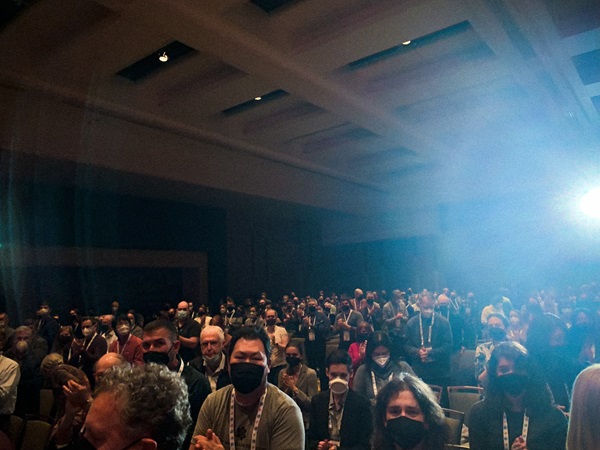
After the AAS session, Robert Kirshner, the TMT’s executive director, told Astronomy, “There’s a long way to go, but I’m cautiously optimistic.” Referring to the mood in the room, he said, “You could hear it, you know — there’s a reason to be hopeful.”
Kirshner was hired on as TMT’s executive director just a year ago. He sees the fact that he is new to the issue as “a good thing,” and cites TMT community outreach efforts as part of a new approach from the astronomical community, shifting from persuasion to dialogue. “Instead of telling people, ‘Oh, we’re going to do something for you,’ it’s much better to listen and see what people want,” he said.
And, he suggested, there is an appetite among astronomers to deescalate tensions. “We’ve been, you know, in this zone where it looks like — well, it is conflict. That’s not a comfortable place for people who care so much about finding out about how the world works.”
Breathing room
Komeiji is frank about the challenges facing the MKSOA board, which are not just political but also logistical. The authority is starting from scratch; at the time of the AAS meeting, it had yet to hire any staff and Komeiji said he wasn’t even sure how to access the $14 million in funds that the state has appropriated for it. Key personal connections also still had to be made: After the MKSOA panel ended, Kirshner walked up to Komeiji to introduce himself and give him his business card.
“What I’m trying to do is make sure that we build the agency as quickly as we can,” Komeiji told Astronomy, “and then on a parallel track start having discussions about TMT, about decommissioning, about new leases.”
Komeiji has previously served as president of Hawaiian Telecom and general counsel and vice president for Kamehameha Schools, the prestigious college-prep school system founded by Hawaiian royalty in 1887. But he knows that steering the MKSOA may be his most challenging job yet. “There has not been one person that hasn’t called me crazy,” he said on the panel. “But you know, Hawaii has been my home. Hawaii is very important to me. And I get emotional about this. Because … this is probably the most divisive issue that has come for all of Hawaii in my lifetime.”
When asked by Astronomy whether he was feeling time pressure from observatories, he wryly replied, “In my life, I’m very much aware of timeframes and people’s time requirements.” Then he added: “The one timeframe that is not as clear to me, but I’m always thinking about, is what the timetables are for the funders.”
In good news for him, at the AAS meeting in Seattle, one major potential backer of the telescope, the National Science Foundation (NSF), signaled an openness to letting the process play out. So far, the U.S. partners of TMT are all universities or private institutions. Unlike the other nations involved in TMT — Canada, China, Japan, and India — the U.S. government has not committed significant funding.
But that would change if NSF decides to invest in the project. And the agency is considering doing so, spurred by a strong endorsement from the influential astronomy decadal survey published in 2021 by the National Academies of Sciences. That report recommended that TMT and a rival telescope, the Giant Magellan Telescope — currently under construction in Chile — combine forces, with NSF coordinating a joint organization to encompass both facilities.
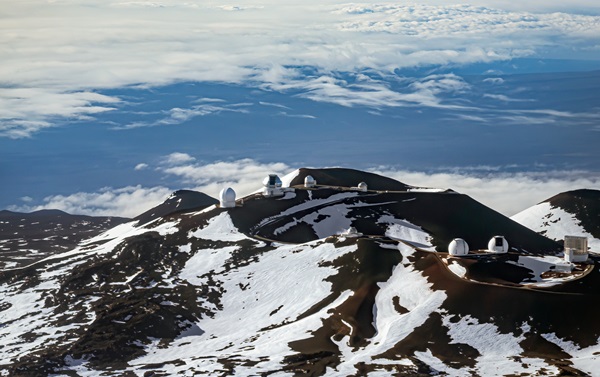
But the NSF is willing to be patient on making that decision, said the agency’s astrophysics division director Debra Fischer, who is also an astronomer at Yale University specializing in exoplanets, at an AAS session on Jan. 11.
Fischer called the Mauna Kea panel “very moving” and threw the agency’s support behind the new oversight board and its process. “We at the NSF are committed to working in lockstep with this new authority. For myself, I would be unwilling to go forward, to recommend a partnership, that didn’t have the approval of the authority,” said Fischer.
“A year ago, I would have been chomping at the bit and feeling very anxious about, ‘Well, when can we start?’” Fischer told Astronomy. Now, she’s developed “kind of a more zen-like feeling about it. I think that there is a good chance that this will happen, but it’s going to happen on a timescale which is, you know, their [MKSOA’s] timescale, if it’s going to happen at all. I’m not sure what that will be. I don’t know if it will be a couple of years, or if it will be longer.”
She added, “I think it’s really important that we back off. We’ve been pushing too hard.”
Fischer indicated she was not yet taking for granted that TMT would be built on Mauna Kea. “We’re going to have to think about … what expectations do they have for TMT to go forward? Is it being built in the right place? Are there other telescopes that will need to be removed?” (In 2016, the TMT identified La Palma in the Canary Islands as a backup site.)
In Seattle, MKSOA members held several meetings with astronomy officials behind closed doors. But it is not only astronomers that they have to win over. Now, back in Hawaii, they are starting the same process with the Native Hawaiian community, which has diverse opinions about the future of astronomy on Mauna Kea. Some would like to see the presence of astronomy on the mountain reduced further, or even eliminated entirely.
For Matsuda, what happens on Mauna Kea has implications beyond Hawaii. Speaking to Astronomy last year, he noted that ground-based astronomy is often done in mountaintops that are sacred Indigenous spaces. For instance, in the U.S. southwest, Indigenous communities have at times opposed telescope construction on Kitt Peak, Mount Graham, and Mount Hopkins.
“I think we’re in the process now of assessing ourselves and trying to figure out what’s the right way to go forward. I think Mauna Kea is but an example of that. And I think … similar processes need to happen in other places for the sustainability and long-term future of astronomy.”







